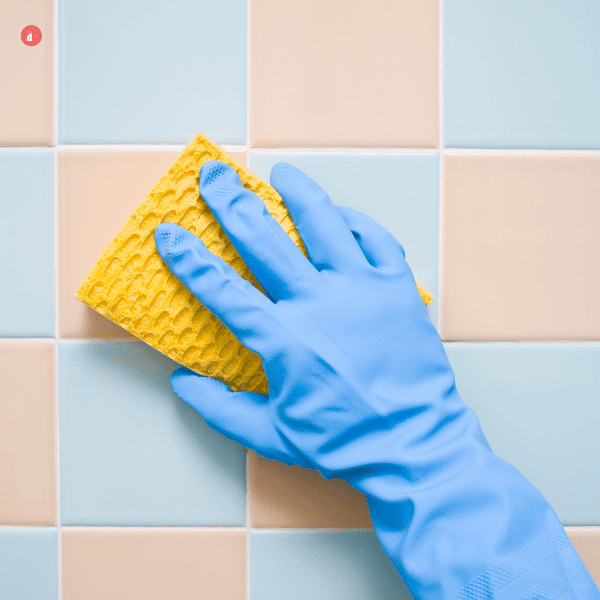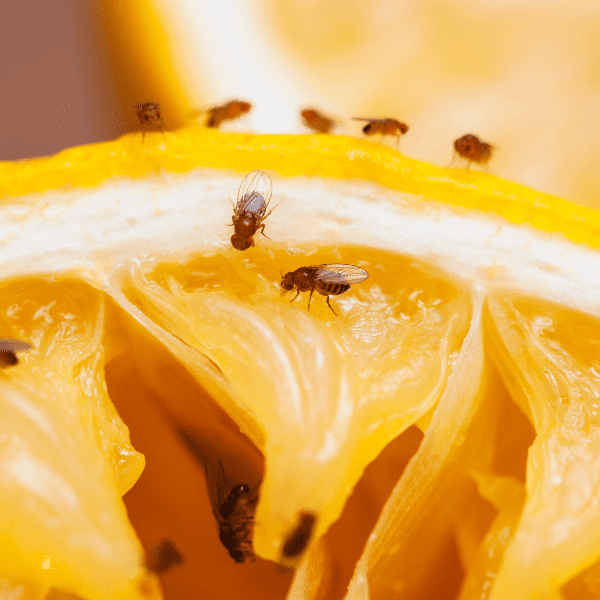What Is The Best Mold Remover For Siding?
This post may contain affiliate links which might earn us money. Please read my Disclosure and Privacy policies hereYou might be wondering, What is the best mold remover for siding? When it comes to keeping the outside of your home looking its best, dealing with mold on your siding can be a frustrating challenge. Mold not only looks unsightly, but it can also cause damage to your home if left untreated. With so many products claiming to be the best mold remover for siding, it can take time to decide which one to choose.
Let’s talk about what makes a good mold remover and highlight some of the top options available. Our goal is to provide you with straightforward, helpful information so you can make an informed decision and get your home's siding looking clean and mold-free once again.

Understanding Mold on Siding
Mold on siding is a common issue that many homeowners face. It is important to understand what causes mold growth on siding and how to identify the signs of an infestation. Mold thrives in damp and humid conditions, making siding a perfect breeding ground. Signs of mold infestation on siding include discoloration, a musty odor, and green or black patches.
This mold growth can be identified by various colors, from green mold to the more alarming black mold. When you see this issue, You may question the best mold remover for siding, but understanding what you are dealing with is key.
Types of Mold
Understanding the different types of mold you could find is important:
- Green Mold: Typically, this is algae and grows where there is moisture and shade. It’s less harmful to humans but can be more of a sore spot for aesthetic reasons.
- Black Mold: This is more serious and sometimes linked to health risks. It grows on particularly damp surfaces and is often a sign of chronic moisture issues.
What Causes Mold Growth on Siding
Mold growth on siding is often a result of damp and humid conditions. When moisture gets trapped on a home's exterior, it provides an ideal environment for mold spores to thrive. Common causes of mold growth on siding include excessive rainfall, high humidity levels, poor ventilation, and water leaks.
If the siding material is porous or has cracks, it can absorb and retain moisture, further promoting mold growth. Regular maintenance and addressing potential sources of moisture can help prevent mold growth on siding.
Signs of Mold Infestation on Siding
Signs of mold infestation on siding are often easy to spot if you know what to look for. Some common signs include discoloration or dark spots on the siding's surface, a musty or unpleasant odor around the affected area, and fuzzy or slimy patches.
Furthermore, if you notice any peeling or bubbling of the siding material, it could indicate moisture and mold growth underneath. It's important to address these signs promptly to prevent further damage and potential health risks.
Importance of Using Mold Removers
Using mold removers is crucial in maintaining the integrity of your siding and ensuring a healthy living environment. Mold infestations on siding can spread quickly and lead to extensive damage if not addressed promptly. Mold removers are specifically formulated to eliminate mold spores and prevent their regrowth.
Using these products can effectively remove mold stains and prevent further colonization. Mold removers help improve air quality, eliminate unpleasant odors, and protect the structural integrity of your siding. It is important to choose a quality mold remover to effectively combat mold and maintain the cleanliness and appearance of your siding.

Benefits of Using Mold Removers on Siding
Using mold removers on siding offers several benefits. Firstly, mold removers effectively eliminate mold spores, preventing them from spreading and causing further damage. They also eliminate mold stains, improving the appearance of your siding. Mold removers help improve air quality by removing mold spores from the environment, reducing the risk of respiratory issues.
Using mold removers can eliminate unpleasant odors caused by mold. By regularly using mold removers, you can protect the structural integrity of your siding and maintain a healthy living environment.
Potential Risks of Mold Infestation on Siding
Mold infestation on siding can pose several risks to your home and your health. When left untreated, mold can spread and cause structural damage to your siding. This can weaken its integrity and lead to costly repairs or even replacement.
Exposure to mold spores can trigger allergies, respiratory issues, and other health problems. It is important to address mold infestation promptly to minimize these risks and ensure a safe and healthy living environment.
How Do I Get Rid of Black Mold on the Side of My House?
Black mold, or more formally, Stachybotrys chartarum, is a concerning sight and signifies prolonged moisture exposure. Tackling this type of mold requires a more robust solution.
High-Strength Cleaners
Look for mold removers specifically designed to combat black mold. These cleaners typically contain antimicrobial agents and can be quite potent, requiring protective gear such as gloves and a mask when applying.
DIY Solutions
For the eco-conscious homeowner, there are effective homemade remedies. For instance, a solution of vinegar and water in a 1:1 ratio can act as a mildewcide and kill the fungus. However, diligence and regular maintenance are key with this route.
Professional Services
Sometimes, the infestation could be so severe that a professional mold remediation service is necessary. These services have specialized equipment and can safely handle the cleanup while ensuring the problem doesn’t return.

Will a pressure washer remove mold from siding?
Pressure washing can be a quick and effective way to remove mold from siding. It’s important to use the right pressure and attachment, as too much force can damage the siding or even force water behind it, creating new problems.
Understanding PSI
For softer materials, like wood or vinyl, a pressure washer with a PSI of 1,300 to 1,600 is recommended. For tougher materials like brick or concrete, a PSI of around 2,500 should suffice.
Adding Detergent
Many pressure washers have a detergent dispensing system that can be used to apply a cleaning solution. Just be sure to use a mold-specific cleaner for best results.
Choosing the Right Mold Remover Product
When looking for a product to remove mold from your siding, it can be tempting to grab the first thing off the shelf. However, considering a few factors can help ensure you select the best option.
Effectiveness
Does the product specifically mention the types of mold it is formulated to remove? Does it have any certification or testing proving its efficacy?
Safety
If you have pets or small children, you want to be sure the product you choose is safe once it has dried. Look for indicators on the label that the product poses no harm after use.
Environmental Impact
Opt for products that are biodegradable and do not contain harsh chemicals, especially if you live near water systems or have a well on your property.
Application Convenience
Consider the method of application you prefer. Some products come in spray bottles for easier application, while others need to be mixed and applied using a sprayer or brush.
Cost-Effectiveness
Look at the concentration and size of the product relative to the price. Sometimes a more expensive, concentrated solution can be diluted and last longer, making it more cost-effective in the long run.

Tips for Applying Mold Remover on Siding
When applying mold remover on siding, there are a few tips to follow for best results. First, make sure to follow the instructions provided by the manufacturer. It's important to wear protective gear such as gloves and goggles to ensure your safety. Before applying the mold remover. Scrubbing the surface with a brush is a good idea to remove any loose mold or debris.
Apply the mold remover evenly and generously, covering the entire affected area. Leave the product on for the recommended amount before rinsing it off thoroughly with water. Finally, remember to dispose of any leftover mold remover according to the manufacturer's instructions. By following these tips, you can effectively remove mold from your siding.
Preventing Future Mold Growth
The best way to deal with mold on your siding is to prevent it from occurring in the first place. Implementing preventive measures can save you time and money down the road.
Ensure Proper Drainage
One of the leading causes of siding mold is water accumulating near your home. Check your gutters, downspouts, and grading to ensure that water is directed away from your home.
Reduce Shaded Areas
Trim back trees, bushes, and any other landscaping that shades your siding. Increased sunlight and airflow can deter mold growth.
Regular Cleanings
Schedule regular cleanings of your siding, especially in areas prone to mold. A simple soap and water solution can often prevent mold from taking hold.

Final Thoughts
Finding the best mold remover for your home's siding is an important step in maintaining your property's value and your family's health. Whether you opt for a DIY solution, a store-bought product, or professional services, understanding the type of mold you're dealing with, its severity, and the preventive measures will set you on the path to a mold-free home.
Remember always to follow the instructions on the product label for the safest and most effective use. With these tools and tips, you can confidently restore your siding to its former glory.
By following this guide, you'll be equipped with the knowledge to decide which mold remover is the best fit for your siding, ensuring your home is free from those unsightly patches and the issues they may bring.
FAQs About Removing Mold from Siding
How do I know if I have mold on my siding?
Dark spots, discoloration, or a fuzzy texture on your siding may be signs of mold infestation. You can also look for a musty odor near the affected areas.
Can I remove mold from siding myself?
You can remove mold from siding yourself with the right mold remover and proper safety measures. However, it's best to consult professionals if the mold infestation is severe or covers a large area.
How often should I remove mold from my siding?
The frequency of mold removal depends on various factors such as climate, maintenance, and the presence of other mold-prone conditions. Regular inspection and cleaning can help you identify and mitigate mold growth.
Will removing mold from siding prevent it from coming back?
While removal can eliminate existing mold, it may not guarantee it will not return. Preventive measures, such as keeping the siding clean and addressing any moisture issues, can help reduce the chances of mold recurrence.







